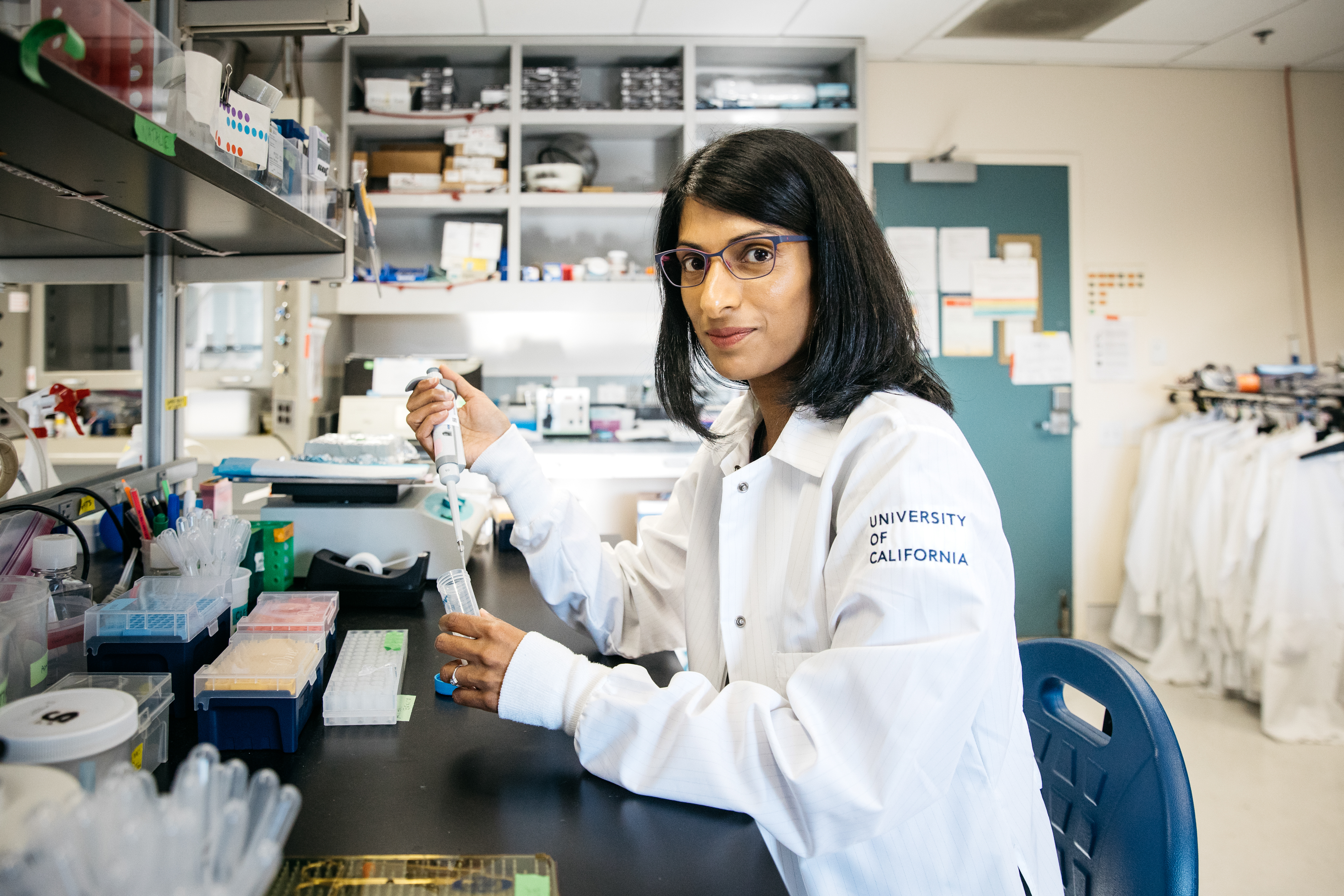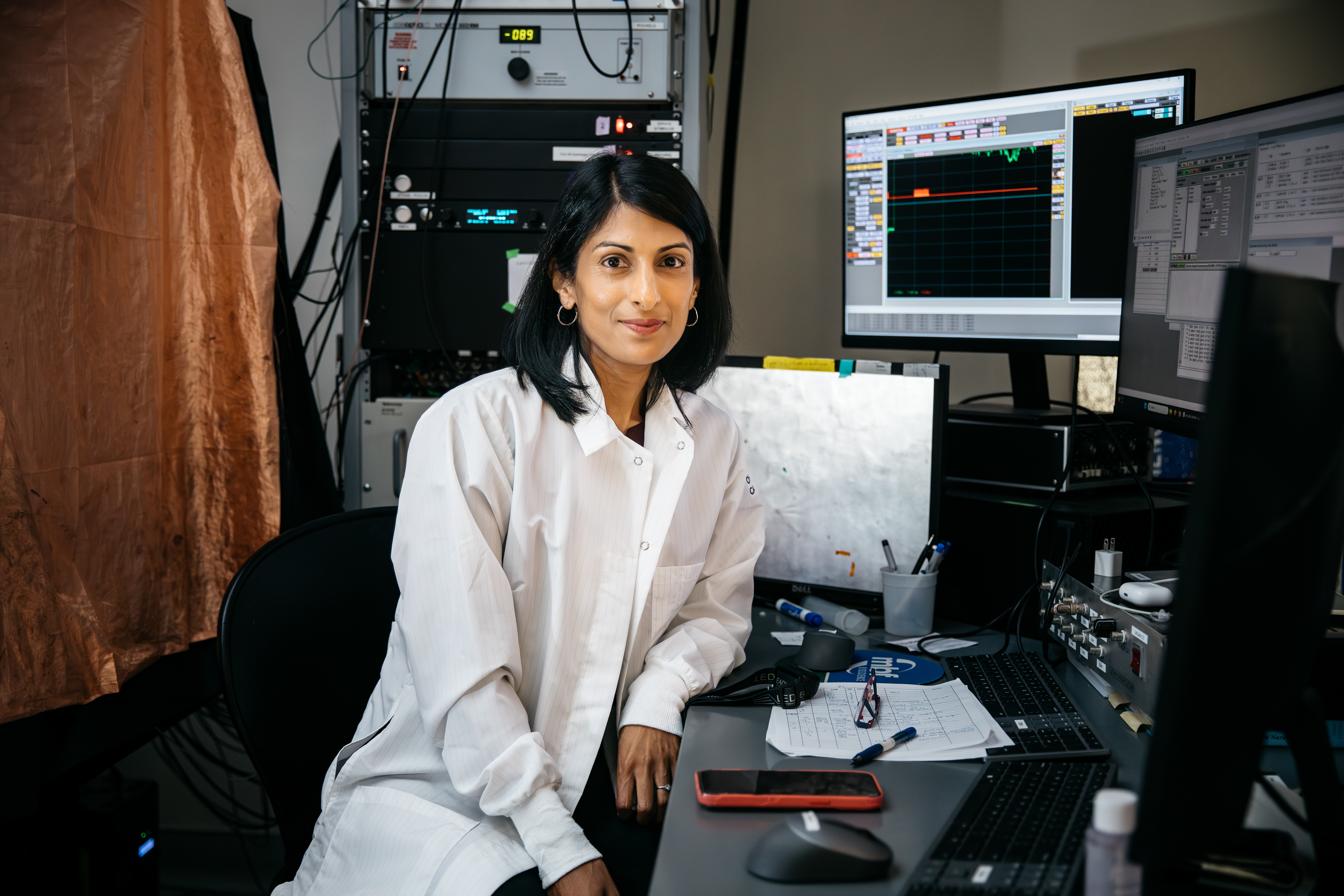About Teresa's Work
Teresa Puthussery is a neurobiologist and optometrist exploring how neural circuits of the retina encode visual information for the primate brain. Her research into retinal ganglion cells is filling a long-standing gap in knowledge about the human visual system. It also has implications for treating retinal neurodegenerative diseases such as glaucoma and macular degeneration.
Primates’ retinas convert images into electrical signals that can be interpreted by the brain. Retinal ganglion cells (RGCs) are the neural output pathway of the retina: they deliver the encoded images to the brain via the optic nerve. It is estimated that primate retinas contain at least 20 different types of RGCs, each of which transmits specific visual information, such as form, color, contrast, and motion. Because most cell types are sparsely represented in an individual retina, they are exceedingly difficult to study, and the specific functions of most primate RGC types are unknown. Drawing on her training in optometry, deep knowledge of eye anatomy, and facility with neuroscientific experimental techniques, Puthussery discovered direction-selective ganglion cells (DSGCs) in the primate retina. DSGCs detect the direction in which a visual scene is moving and prompt the eye to follow it, thereby maintaining a stable and clear image. They were first identified in the rabbit retina nearly 60 years ago. Research had not previously revealed DSGCs in primates, and scientists speculated that this complex visual feature was encoded in the primate brain, rather than in the retina. Puthussery laid this speculation to rest, identifying DSGCs in primate retinas through a novel combination of genetic, electrophysiological, and imaging technologies. She analyzed single-cell RNA sequencing data to find candidate cells and then used antibody staining, cell morphology analysis, and two-photon calcium imaging to confirm and measure the cells’ functional properties. Puthussery’s approach is more robust than previous methods used to characterize RGCs and will enable determination of the structure and function of other types of RGCs.
In another line of work, Puthussery is investigating how retinal neurons are affected by photoreceptor degeneration. She is also working with collaborators to assess whether stem cell–derived photoreceptors can be used to restore vision in diseases that cause photoreceptor loss, such as age-related macular degeneration. Puthussery’s insights into the complex circuitry of the primate retina are laying the foundation for a more complete understanding of human vision and for treatments of debilitating eye diseases.













